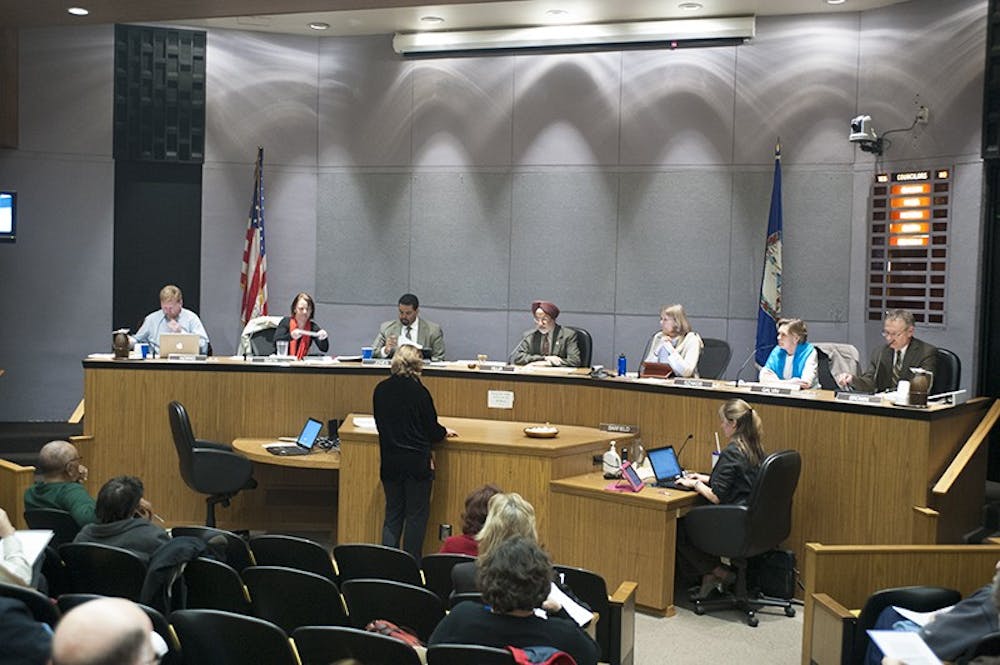City Council discussed a contentious proposal to adopt a Strategic Investment Area plan Monday night. The body voted 4-1 in favor of the plan, which outlines goals to redevelop a large plot of land just south of the Downtown Mall.
The land is bound by Ridge Street to the west, Avon Street to the east, Elliott Avenue to the south and the CSX railroad tracks to the north. The area is primarily residential, and includes both public and private housing units. It faces troubling issues of concentrated poverty, housing decay, crime and poor health.
“We looked at this area — there were no parks, no safe streets, no street trees,” councilmember Kathy Galvin said. “We asked, ‘Why isn’t it possible for poor children to have quality neighborhoods?’”
Council stressed the SIA was just a set of guidelines for how to approach developing the area, and anything which required city funding or code changes would be brought before Council at a later date. The plan was presented by Jim Tolbert, the City’s director for neighborhood development services.
“The SIA gives suggestions for ways [the city and private companies] might invest,” Tolbert said. “It also recommends that we might want to make changes to zoning code … [though] that would be a whole [other] public process.”
The plan recommends rebuilding public housing units, improving infrastructure, promoting the development of higher-income housing and other private business ventures, and constructing public parks and libraries. Ideally, councilmembers said the SIA would lower crime and provide increased long-term economic opportunities for Charlottesville’s lowest earners.
Prior to the meeting’s discussion of official business, several citizens addressed the Council with their concerns about the plan. Most complaints centered around the fact that neighborhoods would be displaced through the creation of a “mixed” housing neighborhood, which would combine low-income and higher-income housing.
No current plans exist to decrease the amount of public housing available.
“You dilute a community if there is a geographic deconcentration,” one Charlottesville resident said. “The idea is to just thin them out a little bit … disperse those neighborhoods. This is a problem and not a way address poverty.”
Councilmember Kristin Szakos responded to those concerns, saying she was sympathetic to the arguments against pulling apart neighborhoods, but noted the compelling reasons to institute mixed housing.
“A lot of these concentrated neighborhoods are a result of racism and Jim Crow laws, not because a lot of people without a lot of money decided to live on the same block,” Szakos said. “We looked at studies [concerning] children who live in neighborhoods where only other poor people live … and we found they are downwardly mobile, [or] earn less income than their parents. To [say] that’s the way it is — to me, it gives glory to a system that was really evil.”
Other concerns centered around plan’s flexibility, with some positing the City would take over private property and sell off public property for adverse use. This discussion also addressed the issue of diminishing access to affordable housing, but councilmembers held strong in their claim the area would remain affordable.
“It just says there’s more opportunity for more public housing,” Tolbert said to address some of these concerns. “Those decisions aren’t made yet. [The plan] offers suggestions.”
Councilmembers agreed these concerns about low-income residents and gentrification warranted attention, as a result amending the original resolution to include the phrase “flexible guide without being binding” to reach Vice Mayor Dede Smith’s standard of clarity.
Councilmember Bob Fenwick was the only councilmember to oppose the resolution. Throughout the meeting, Ferrick warned low-income residents to be skeptical about what was happening, expressing concerns the plan was constructed with disproportionate input from property owners and minimal input from the residents themselves.
Szakos contested Fenwick’s claims and praised the plan’s implementation of public engagement.







